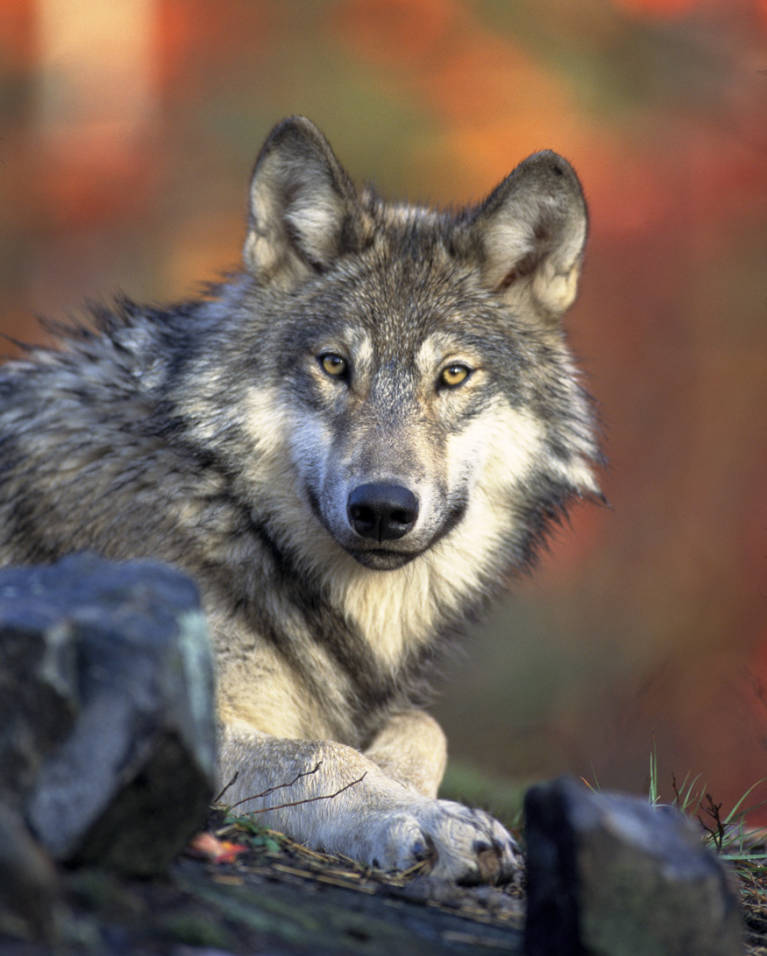Below is a news release from the Michigan Department of Natural Resources. The Rocky Mountain Elk Foundation maintains state agencies should manage wolves just as they manage elk, black bears, deer, mountain lions and other wildlife.
Upper Peninsula
The 2024 winter wolf population survey estimate from the Michigan Department of Natural Resources found a minimum of 762 wolves in Michigan’s Upper Peninsula. This year’s estimate showed an increase of 131 animals compared to the 2022 estimate of 631; however, the results demonstrate a continued trend of statistical stability in Michigan’s wolf population.
“This year’s survey findings are statistically consistent with our wolf population surveys for the past 14 years,” said Brian Roell, the DNR’s large carnivore specialist. “When a wild population reaches this stable point, it is typical to see slight variations from year to year, indicating that gray wolves may have reached their biological carrying capacity in the Upper Peninsula.”
In other words, Michigan’s U.P. wolf population has achieved an equilibrium between availability of habitat and the number of wolves that habitat can support over time.
The survey, completed last winter, found the population distributed among 158 packs in the Upper Peninsula, with an average of 4.8 wolves per pack. This year’s survey represents the highest population estimate since 2012, when the department began doing the semiannual survey. The survey is conducted during the winter because it relies in part on identifying wolf tracks in the snow.
Prior to the winter of 2007, the DNR sought to count wolves throughout the entire Upper Peninsula. However, as the wolf population increased, this peninsula-wide survey method became more difficult and time-consuming, especially the process of distinguishing among adjacent packs.
As a result, the department developed and evaluated a different sampling method to reduce the search area and allow additional time to accurately count wolves in neighboring territories. The new approach uses a geographic stratification – essentially breaking up regions into small pieces and ensuring those regions have representative samples – and produces an unbiased, precise minimum estimate of wolf abundance in Michigan’s U.P. during midwinter when wolves are at their lowest point in their yearly population cycle.
The DNR is currently evaluating two other techniques for estimating wolf abundance in the U.P. One relies on a track survey similar to the department’s current method. The other uses trail cameras spread across the U.P.
If successful, these additional techniques may have advantages over the current methodology, mainly by decreasing staff time. The camera model would have the added benefit of producing estimates at times of the year other than winter.
This March 2024 Showcasing the DNR story shares more about the survey pilot programs.
Lower Peninsula
At the same time, the department plans to continue its search for wolves in the Lower Peninsula. The last survey for the presence of wolves in the northern Lower Peninsula occurred in 2019. A new survey is planned for early 2025.
Monitoring wolf presence in the northern Lower Peninsula is significantly different than in the Upper Peninsula because wolves, if present in the Lower Peninsula, are at such low-density levels the track survey protocol used in the U.P. is impractical.
Instead, a targeted search approach based on resident reports of wolves or wolf sign – such as tracks or scat – is used to concentrate efforts in areas more likely to have wolves. The department also plans on testing some new technology using trace DNA collected from fresh tracks left in the snow to verify suspected wolf presence.
Although it is possible that individual wolves currently occupy the Lower Peninsula, as of April 2023, the state’s wolf population is not known to extend to that part of Michigan.
During the 2011 targeted winter track survey, and shortly after the 2015 survey period, tracks consistent with a wolf were observed in Cheboygan and Emmet counties. In 2014, biologists from the Little Traverse Bay Bands of Odawa Indians captured what appeared to be a wolf on a trail camera and were able to collect a scat sample. DNA analysis of the scat confirmed the animal to be a male wolf.
The last wolf identified in the Lower Peninsula was a male wolf taken in January 2024 in Calhoun County by a coyote hunter. An investigation into the matter failed to determine how the wolf came to be in Calhoun County.
“Research has suggested that there is suitable habitat for wolves in the northern Lower Peninsula,” said Roell. “However, this habitat is fragmented and the ability of wolves to travel the landscape among these habitat patches is uncertain. Suitable habitat becomes even more patchy in the more populated southern Lower Peninsula, which makes it unlikely that wolves would establish themselves there.”
Wolves in Michigan are currently protected under the federal Endangered Species Act by federal court order. As a result of this status, wolves can be killed only if they are a direct and immediate threat to human life. Because wolves in Michigan long ago attained federal and state population goals, the DNR continues to advocate for returning wolves to state management.
(Photo credit: U.S. Fish and Wildlife Service)
